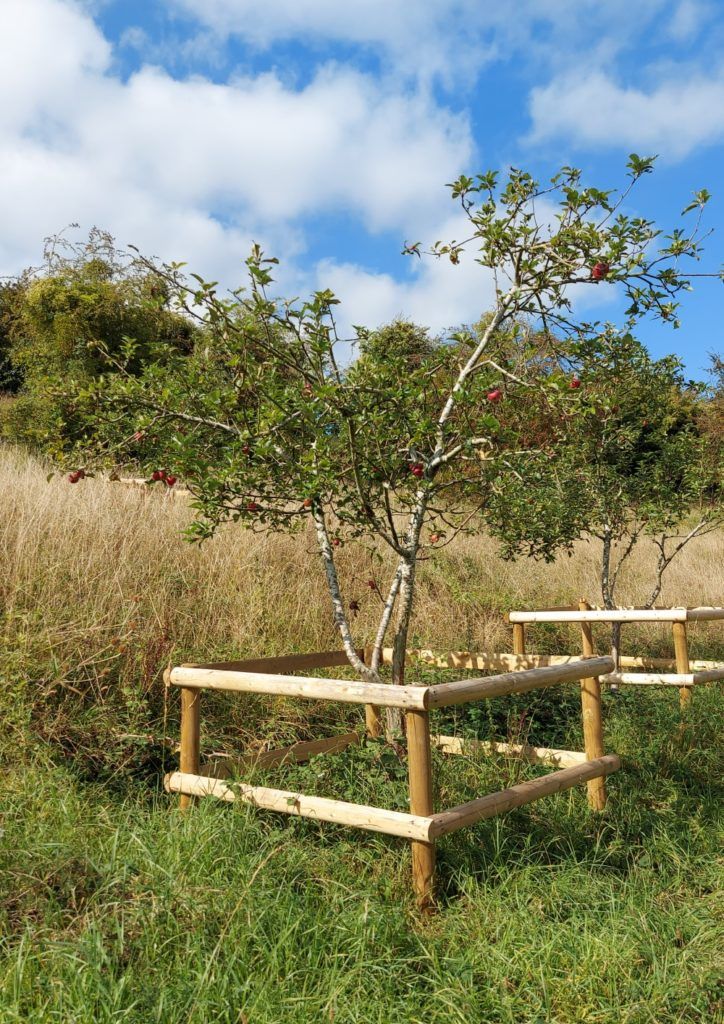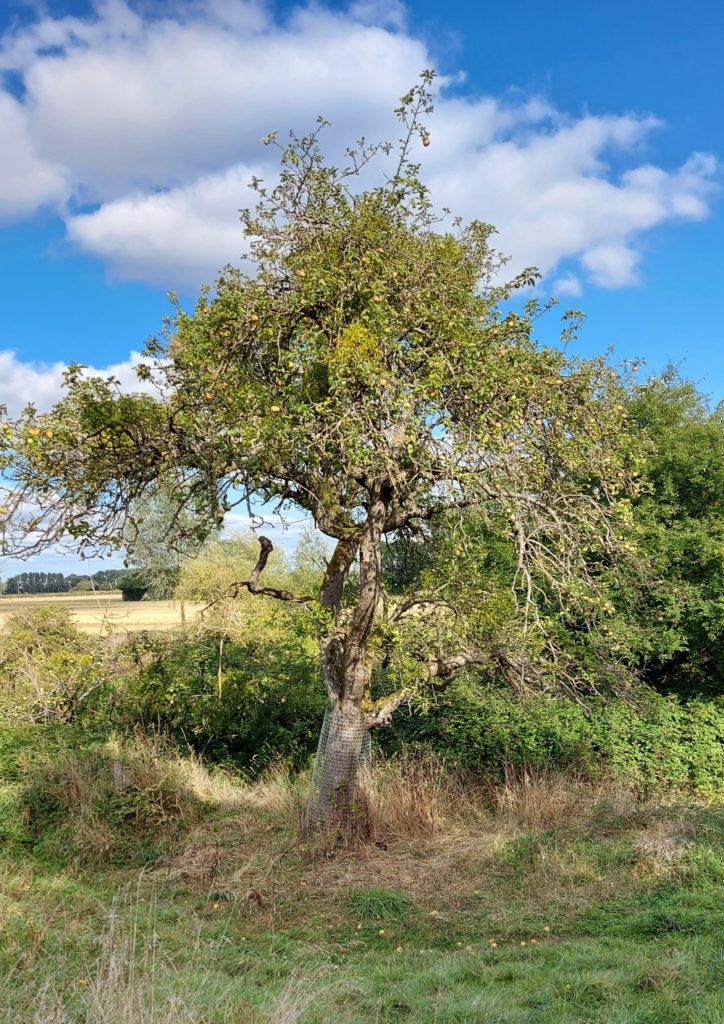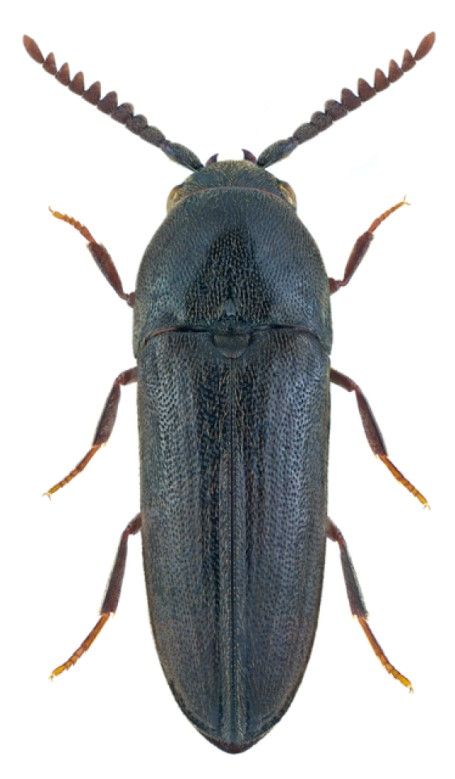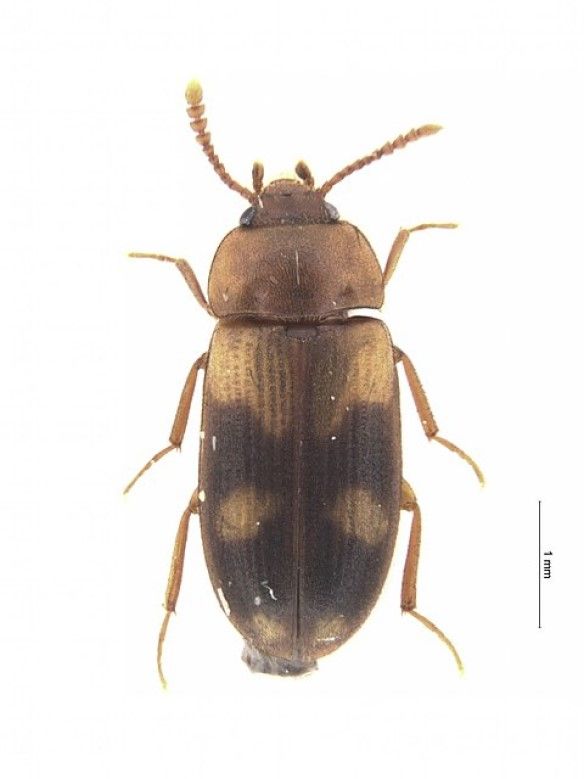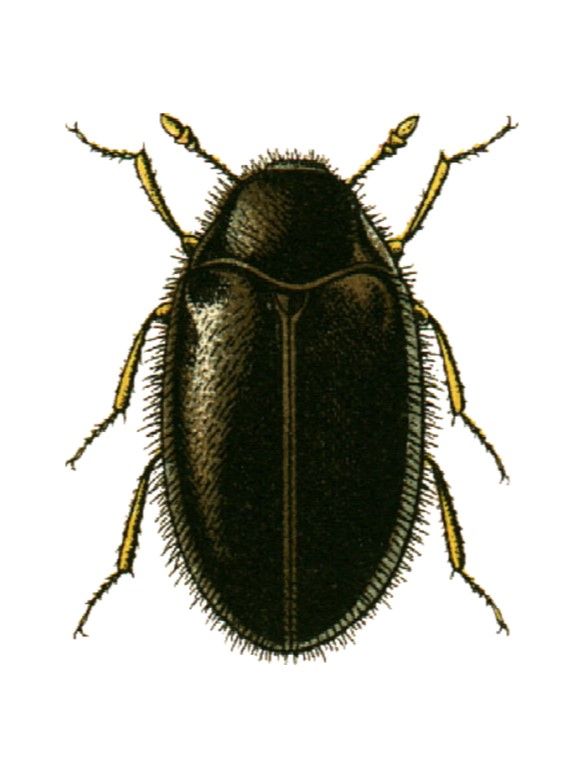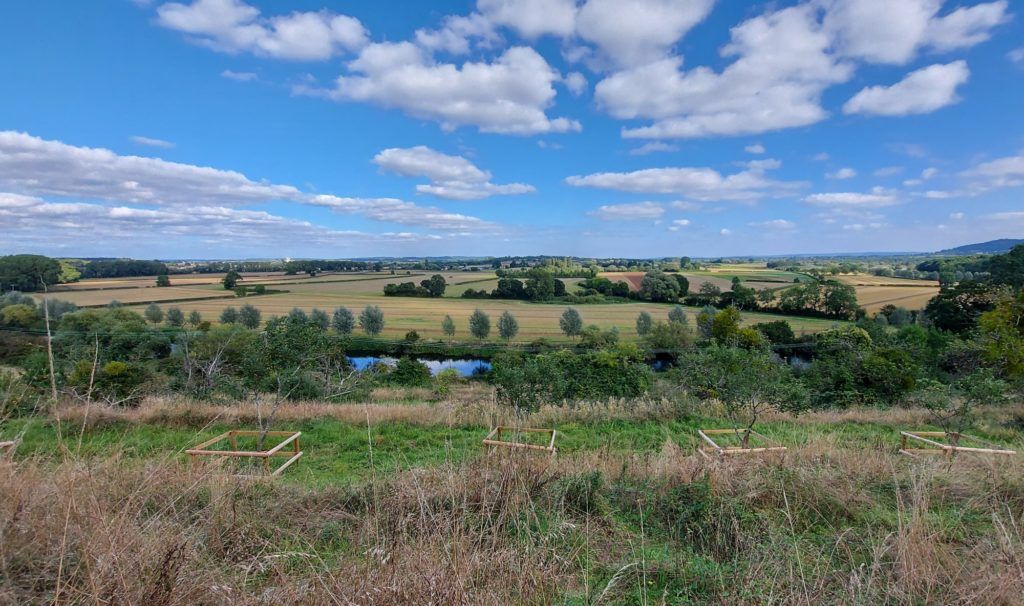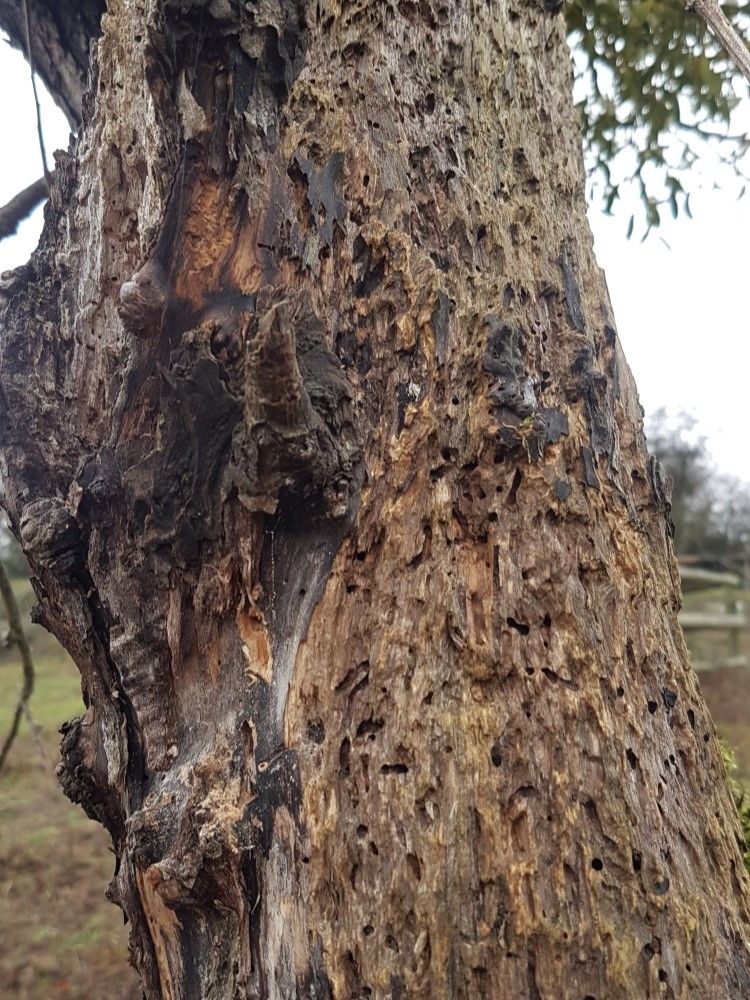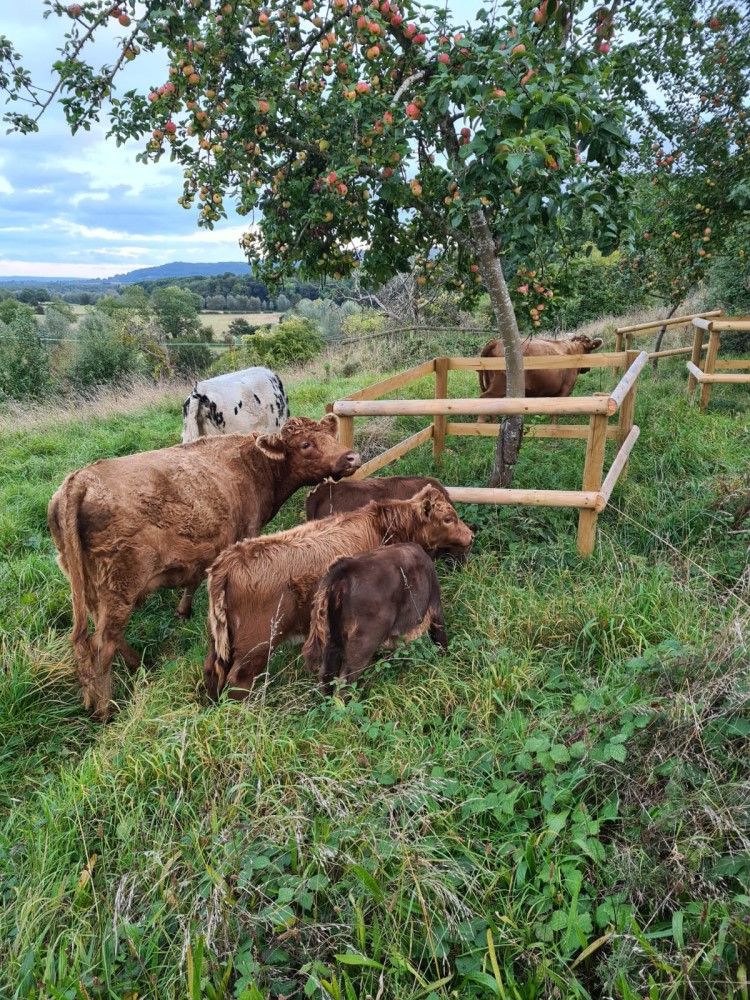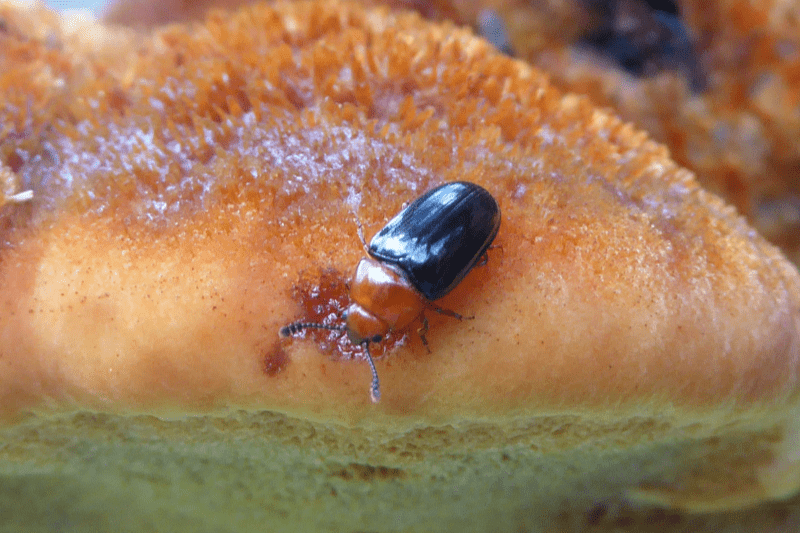Our Rough Hill orchard
Rough Hill is a traditional apple orchard on the banks of the river Avon in Worcestershire. People’s Trust for Endangered Species (PTES) has owned it since 2003, when we decided to save it from neglect and hoped to discover the noble chafer beetle there (PTES had recently become the lead partner for the noble chafer biodiversity action plan).
2021’s invertebrate survey
Rough Hill has some seriously old trees. The orchard was originally planted up in 1910, so the old trees that remain are over 110 years old! When we first took ownership of the orchard, we realised that apple trees this old were likely to be housing some important saproxylic (dead wood loving) insects. So we enlisted the help of entomologist Dr Keith Alexander to really take an in depth look at the trees and use his expertise to hopefully find some rare gems.
The first survey was in 2006, he repeated it in 2013 and the latest survey was conducted in 2021. Keith used different methods of finding insects, from sweep netting to bottle traps to searching in tree cavities by hand. Some species will have been easy to identify especially for a seasoned expert like Keith, but even he would have had to take some of the specimens home to look at under a microscope for a definitive answer. The 2021 survey found several species new to the site but also some that have been recorded in previous surveys. This appears to strike a balance between showing that species are still persisting at Rough Hill, but also that there are still new species to discover there.
Using a special index, Keith worked out that Rough Hill has an Ecological Continuity score of 37 making it of national significance for saproxylic beetles.
What are saproxylic insects?
Saproxylic insects are those that rely on dead and decaying wood for at least part of their life cycle. They have some very exacting requirements which is why many have become so rare. They can also be fairly sedentary meaning they are unable to move long distances to find new habitat if the one they are in disappears or becomes unsuitable.
This means that not only do they rely on the continuity of the habitat they are in, but also on having a landscape with stepping-stones and corridors of similar habitat in order for them to be able to disperse. Any population that is isolated is more vulnerable to local extinction, which alongside a decline in suitable habitat is one of the reasons this group of species is now so rare.
What did the survey show?
The survey at Rough Hill found 40 species of saproxylic beetle, thirty species of saproxylic two-winged flies, two digger wasps and a fungus gnat! Out of all these species there are three which warrant a particular mention as they are GB red data book species: The false click beetle Eucnemis capucina, the hairy fungus beetle Mycetophagus populi and the hide beetle Trinodes hirtus.
There were also nine beetle and three fly species of Nationally Scarce (NS) status, as well as many local and generally uncommon species.
Using a special index, Keith worked out that Rough Hill has an Ecological Continuity score of 37 making it of national significance for saproxylic beetles.
Why is Rough Hill so good for saproxylic insects?
Rough Hill has the right type of old trees which have decayed to a stage where they are great for providing homes and food for these rare insects. But the key is the continuity or longevity of the habitat because it has been there for over a hundred years. It has the typical traditional orchard features of old trees, grazed grassland and a hedgerow, with some scrub and some new trees – making a mosaic of habitats which can provide everything a fussy saproxylic insect needs.
The orchard is also quite close to Bredon Hill, a National Nature Reserve known for its 300 year old trees and assemblage of rare invertebrates. So it could be that some of the more mobile species (those that can fly a long way) may still be present at a landscape scale utilising the scarce older trees that are dotted around in a fairly open, farmed environment.
How will PTES respond to the results of the survey?
It is so important to have these kinds of surveys done. Only an expert with years of experience can not only find, but put a name to, most of these wonderful species. And without this survey we couldn’t hope to know the diversity and importance of the species that reside there.
To some, Rough Hill can look a bit decrepit, past its best. But it is the wizened old trees that are the heart of the orchard which is why we are doing what we can to protect them and prolong their lives as long as possible. And why we have been planting new trees which will ensure a succession of habitats and continuity into the future.
We have already planted 64 apple trees and 24 plums, and plan to plant some pears for variety. It is important to provide a diverse range of fruit tree species and varieties because they all age and rot differently, so this gives the saproxylic insects the best possible chance (and may even attract some new species).
However, being truly realistic, when the last of the old trees has fallen, the newer trees will only be around 25 years old. This is not nearly old enough to naturally have the splits, cracks, and hollows needed to support the invertebrates. So, we will have to be creative and innovative with our management of the site and perhaps provide artificial homes for them in the intervening years using habitat boxes or artificial veteranisation of trees.
What can we all do to help saproxylic insects?
Dead wood… dead wood… dead wood! It is so important to retain dead wood. Whether this is standing dead trees, parts of living trees that are decaying, split, or cracked, fallen dead wood and underground dead wood. Decaying and dead wood does not necessarily mean that a tree is in poor health. Many saproxylic beetles live in deadwood as larvae but emerge as adults and need nectar rich flowers to feed on for this part of their life cycle. So encouraging wildflowers, particularly umbellifers such as wild carrot, cow parsley, and hogweed will help too.
There is more help and advice for managing orchards for wildlife here. And if you would like to look for noble chafers in your orchard please find out how to here.
Written by Laura Bower, PTES Conservation Officer.

